I listened to Dr. Tiffany Hogan speak…
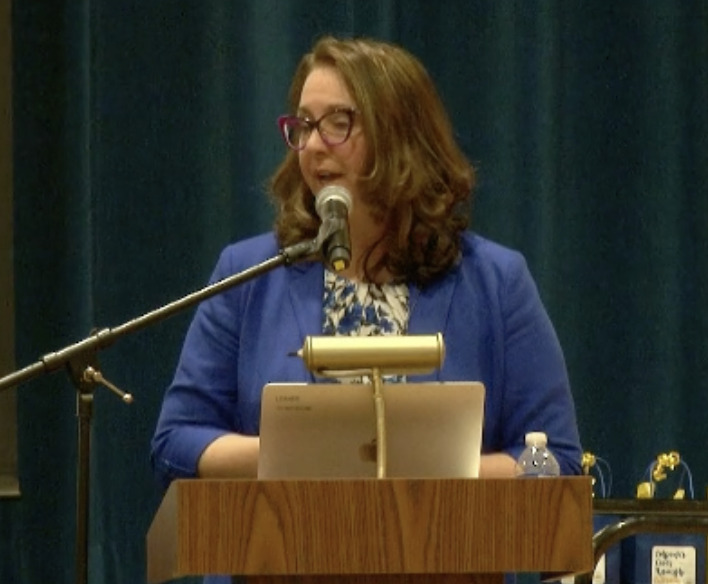
…at the annual AIM Institute Symposium last month. Her area of expertise is language comprehension, as she is currently the Director of Speech and Language (SAiL) Literacy Lab at Massachusetts General Hospital Institute of Health Professionals in Boston.
Image by Lori Josephson
She discussed catching students who experience both decoding AND language comprehension issues–these are called comorbid conditions. Although many students eventually crack the decoding debacle over time, their language comprehension issues often go unnoticed. Here is the culprit: in the primary grades (K-2 or so), the language children practice when learning to decode and read text tends to be quite simple. Then, as children approach the mid-elementary grades, the sentence length becomes longer and more complex. Let’s look at a few examples from social studies articles and/or worksheets I located doing a simple Google search. Thank you to Newsela and Pinterest.
Grade 1: Voting happens all the time. Voting means making a choice.
Grade 2: An election is when people are voting for leaders. Voting means making a choice.
Grade 3: An election is an event when people vote to make a choice between two or more people or things. Voting is a good way for people to make a decision together.
Grade 5: In the 1960s, the United States was at war in Vietnam. Many 18-year-olds were there fighting. The country asked itself if young men can die in Vietnam, then shouldn’t they be trusted with the right to vote? Similarly now, we must ask ourselves about 16- and 17-year-olds. They contribute to society through work and face the criminal justice system as adults. Isn’t it only reasonable to allow them the right to vote?
Grade 7: Some court rulings end fights, while others stir them up. In 2013, the Supreme Court decided a case about voting laws that is still causing widespread disagreement. Courts and legislatures across the United States are still struggling to answer a big question: Has the country overcome its history of racial discrimination enough to get rid of some laws that prohibit it?
DO notice:
- how much longer each sentence becomes as children get older.
- how much more complex the vocabulary becomes; and related to that how many more syllables each word contains as children get older.
- how much more complex the sentence structure becomes as children get older.
- how much more figurative language is used (“stir them up”- grade 7 sample) as children get older.
Someone posed this question to Dr. Hogan in the chat—it piqued my interest.
“Can you recommend a quick screener to identify oral language comprehension problems?”
Do you have children and/or students who could have oral language comprehension issues you are not aware of?? Trust me, these students are in your midst in children’s classrooms and maybe even at your kitchen tables. You just have to find them.
I found a few students…
MS:
Every time she’d bound into my office, MS had a story to tell. The problem was that she couldn’t find her words. Everything MS described as a ‘thingy’….MS could decode pretty well in time, but her listening and reading comprehension lagged and remained an issue well into high school.
AH:
AH became my student at the age of about 12. Her parents were told that AH stared out the window in class and perhaps had ADD. Nothing could be further from the truth! Her decoding was adequate and spelling was fair (she was pretty successful at memorizing for word recognition to read!), but her language comprehension and vocabulary were the culprits. One day, AH’s mom came to listen in on AH’s lesson. I was teaching AH how to actually decode rather than memorize. We got to the word ‘wick’. I asked AH if she was familiar with that word–AH said “no”, and at that moment, I heard her mother’s knitting needles literally falling to the table! AH’s mom had no idea her daughter was unfamiliar with what her mom thought were common words…Does this sound vaguely familiar?
Other words AH had difficulty with included ‘volt’ (confused with the similar sounding ‘vault’), ‘then’ vs. ‘than’, ‘mesh’, ‘sift’. I think these are all words 6th graders ought to know. Don’t you?
MS:
MS arrived at my office as a 9th grader. Again, she had been misdiagnosed as having ADD and often was described as ‘tuning out’ in class. We came upon the vocabulary word ‘funnel’. When queried about the meaning of the word, her response was, “I know what funnel cakes are, but not a funnel.” I recall feeling totally mystified and quickly ran downstairs from my home office to retrieve a funnel from the kitchen for her to see.
Over the course of my career, I worked with many a student whose parents and/or teachers unknowingly dealing with these issues. I gave the issue a good deal of thought.
In time, I came up with a simple idea to test the waters.
And it worked! I was easily able to identify these students.
MY SIMPLE SCREENING IDEA: “TOM HID THE CAT IN THE SHED”
Very simply, I stated this sentence to every student whose teacher I supervised, every student I tested, and every student I worked with myself.
After I stated the sentence, I asked the following:
“WHO IS IN THE SHED?”
If the child responded with “Tom”, I knew there was an oral language problem. I was right 100% of the time.
Sometimes, I asked the child to draw the scene. Inevitably, I got lots of pictures of Tom in the shed alone and also of Tom with his cat in the shed.
Image by Lori Josephson courtesy of autodraw.com Try Autodraw! It’s a great tool if you need assistance drawing! And it is FUN to use!
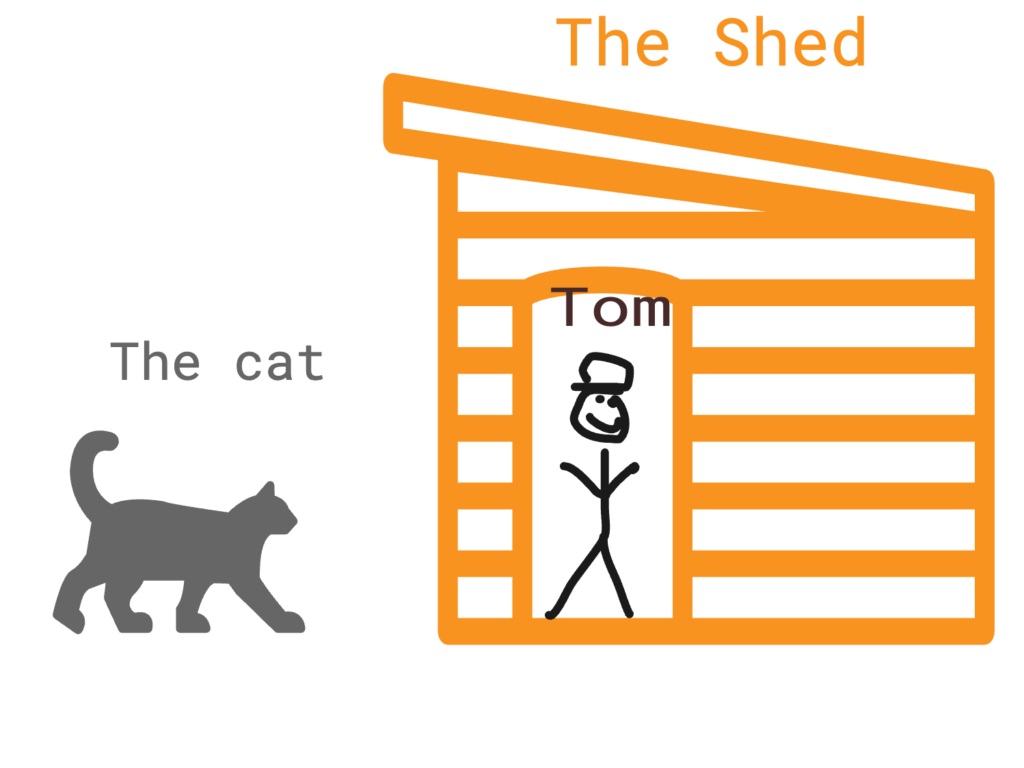
SCALE THIS UP FOR SMALL AND WHOLE GROUP SCREENING?
Couldn’t this ‘work’ in a classroom setting so that we don’t ‘miss’ children who may have oral language issues? Sometimes children can decode well, but still suffer from oral language issues. Sometimes, children may have trouble decoding AND have oral language issues. There is no ‘one size fits all’ here.
WHAT IS CAUSING THE PROBLEM(S)? COULD IT BE DLD?
Let’s dissect the sentence a bit:
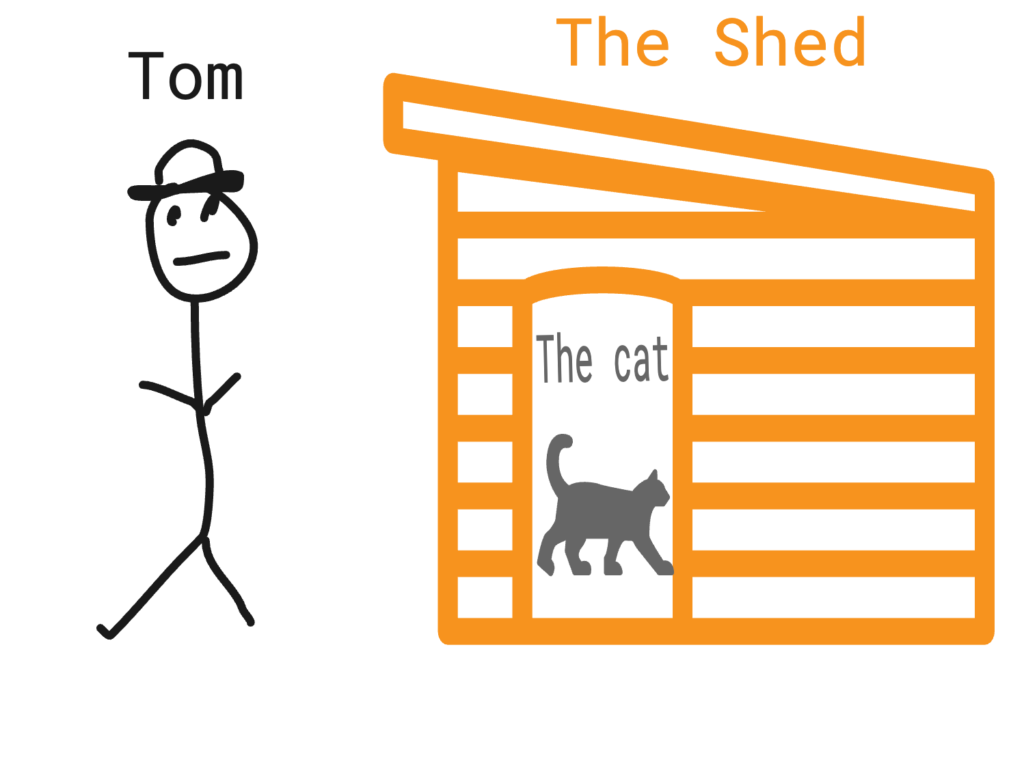
versus

Do not underestimate the value of teaching grammar – and thereby syntax (English word order).
SO MANY students do not understand the functions of words in sentences and are in dire need of direct instruction.
By third grade, most pictures which aided students in their younger grades simply no longer exist.
Many of these students now obtain a diagnosis of “Developmental Language Disorder” (DLD). According to Dr. Hogan, DLD persists across the life span; a person is born with DLD. DLD cuts across all socio-economic levels and can co-occur with other disabilities. These students often have difficulty learning new vocabulary words and learning/using correct grammar. According to the organization RADLD (Raising Awareness of DLD), two children in every classroom have DLD and have “difficulty talking or understanding” and can “benefit from support from speech-language therapists and teachers.” In addition, DLD tends to run in families with some genetic influence inclusive of many genes rather than 1 single gene.
Getting a diagnosis of DLD can be tricky. According to Georgan (2023), students can have DLD, but can qualify for special education services with diagnoses of Developmental Disabilities, Speech Language Impaired, and/or Specific Learning Disabilities. And where does a diagnosis of Dyslexia fit in? Did you know that only 25% of ‘late talkers’ end up with a diagnosis of DLD?
Organizations such as dldandme.org can help families and educators identify language issues early. Did you know that only 20% of children having DLD are identified in kindergarten? The other 80% of children with DLD suffer in silence.
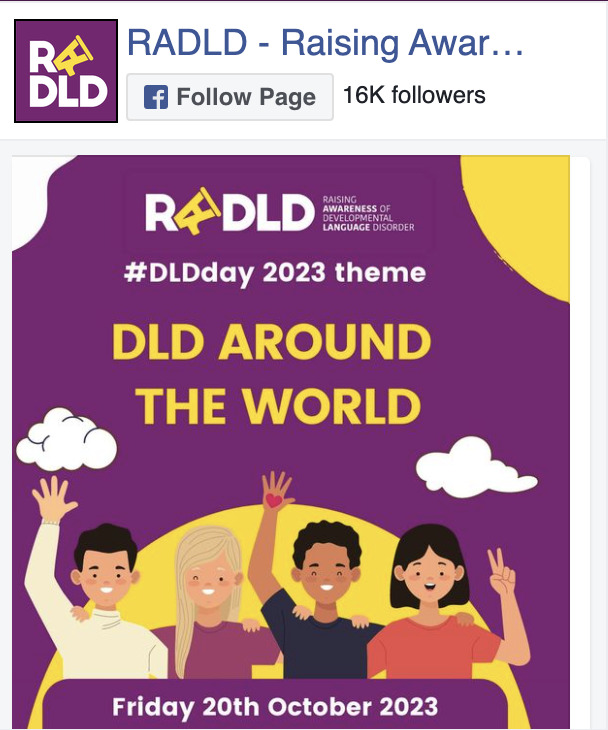
Watch the video, entitled DLD123, to learn more about Developmental Language Disorder. October 20, 2023 is designated as DLD Day.
Image from RADLD
All this said, it is important for teachers and families to pay attention to both word reading AND language comprehension.
WHAT TO DO NEXT
Once you have identified the need for work in oral language comprehension, I have several suggestions, whether you are a parent or a teacher.
Directly teach–LOTS of modeling–yes, YOU (the teacher or parent) draw, WE draw (adult and child),, CHILD draws. Start small and simple, get bigger and more complex—orally retell even at the sentence level and add on another sentence gradually. Yes, draw it!
Image in the public domain (autodraw.com)
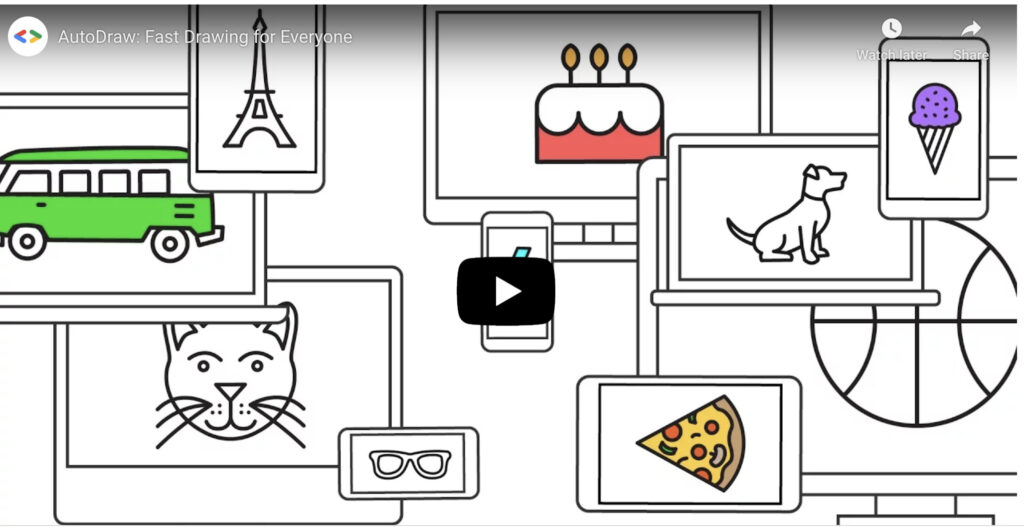
· PRACTICE— a continuum exists here, some students catch on more quickly than others–while others need more practice
· APPLICATION—engage in targeted oral and written language with children—retellings, simple notes, descriptions of pictures—use narrative text (stories first) and then expository (non-fiction writing) text
Stay tuned for future blogs about helping children learn more about syntax and grammar. Instruction facilitating improved language and reading comprehension, vocabulary development, and written language/composition.
DO YOU HAVE A STORY TO SHARE? DO YOU HAVE QUESTIONS?
You can access Dr. Hogan’s talk here, as well as the entire AIM Symposium. Feel free to share! Write a comment and/or ask a question.
